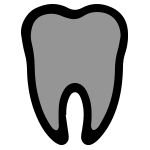Please call our office for assistance to schedule an emergency appointment.
You can also contact us by email at the link below. Forms are reviewed during working business hours.

Toothache
If your child is experiencing a toothache, you can first check to see if they have anything caught in the teeth. Any food or foreign object that may be caught between teeth can be removed with floss. DO NOT place aspirin on the gum or on the aching tooth. Give your child what you would normally give them for pain, such as Tylenol or Motrin.

Broken, Chipped, or Fractured Tooth
If your child has a chipped or broken tooth and you are able to locate the tooth fragment, place it in cold milk and call us immediately. If bleeding has occurred, apply pressure with a cloth and place a cold compress to reduce swelling. Eat or drink foods and liquids at room temperature to avoid causing sensitivity.

Grey or Black Tooth
Dental Trauma is not always witnessed. Often, teeth that have sustained dental trauma in the past can darken. If your child has a dark tooth, please call us to have your child evaluated.

Cut or Bitten Tongue, Lips, or Cheek
Clean the area gently with a cloth. Apply ice/cold compress to any bruised/swollen areas. If there is bleeding, apply firm but gentle pressure with a gauze or cloth. If bleeding does not stop after 15 minutes or it cannot be controlled by simple pressure, take the child to the hospital emergency room.

Displaced Tooth
Displaced teeth, or teeth pushed out of alignment, should be evaluated soon after an injury has occurred so that we can determine whether it is a primary or a permanent tooth and if it can be repositioned. Contact us immediately in these cases.

Dental Abscess
An abscessed tooth is an extremely painful infection that forms inside the tooth’s root. If an abscess is present, your child may suffer from swollen gums, fever, or a bad taste in his or her mouth. Call our office immediately if you suspect a tooth abscess, as the infection can spread to other areas of your child’s body if left untreated.

Bleeding After a Baby Tooth Falls Out
Fold a piece of gauze and place it (tightly) over the bleeding area. Have your child bite down on the gauze for 15 minutes.

Avulsed or Knocked Out Tooth
For Primary or Baby Teeth
Do not try and re-implant the tooth. This can cause injury to the developing adult tooth. You will want to schedule an appointment with our office to evaluate if there are any tooth fragments or other unknown dental injuries.
For Adult Teeth Only
ACT QUICKLY AND WISELY so the tooth can be saved in the mouth. Unlike a baby tooth that is knocked out, adult teeth should be placed back into the socket as soon as possible. Time is a critical factor in saving your smile. Please follow these steps to save a knocked-out permanent tooth:
- Locate the tooth immediately; do not leave it at the site of the accident. Pick up the tooth by the crown (the chewing surface) NOT the root. The tooth should be handled carefully. Touch only the crown to minimize injury to the root. If the tooth is dirty, gently rinse the tooth with water only. Do not scrub or dry the tooth.
- Reposition the tooth in the socket immediately, if possible. The sooner the tooth is replaced, the greater the likelihood it will survive. To reinsert, carefully push the tooth into the socket with your fingers. Hold the tooth in place with your fingers or have your child gently bite down. Double check to make sure the tooth is properly placed.
- Keep the tooth moist at all times. The tooth must not be left outside the mouth to dry. If it cannot be replaced in the socket, put it in one of the following:
- Emergency tooth preservation kit (such as Save-a-Tooth®)
- Milk or saliva in a cup
- If the child is old enough, the tooth may be carried in their mouth (next to cheek). Regular tap water is not recommended for long-term storage because the root surface cells do not tolerate water for long periods of time. Only use water if none of the options listed above are possible.
- Contact the office as soon as possible so that the tooth may be properly re-implanted into the dental socket and stabilized. We want your child smiling soon!




